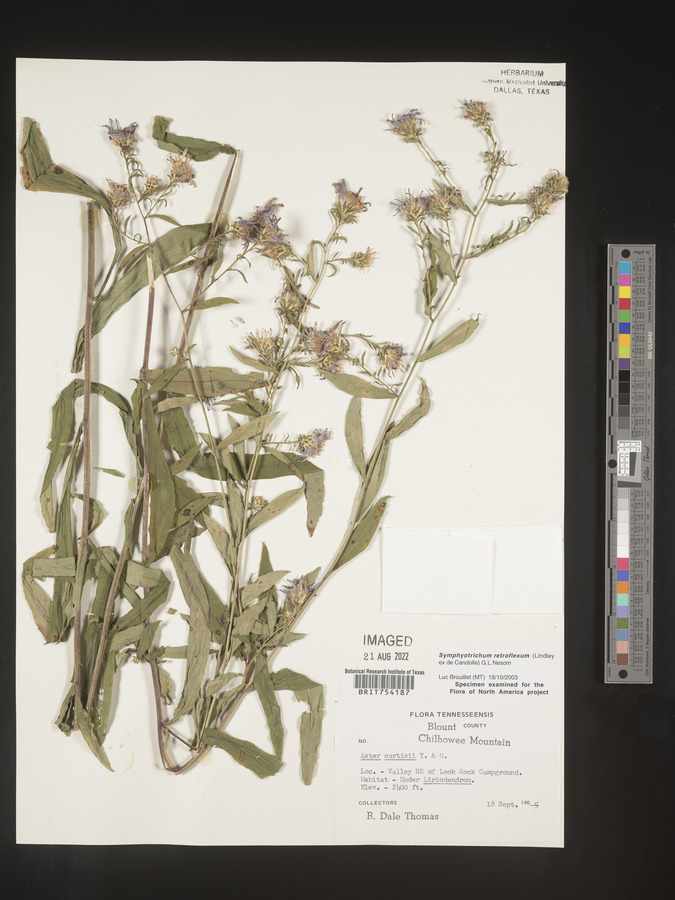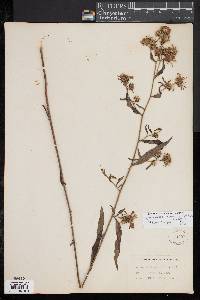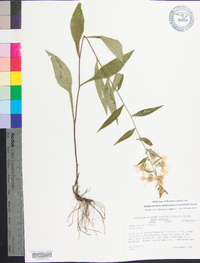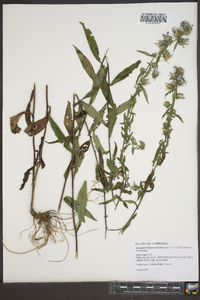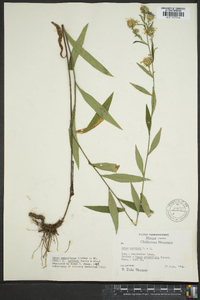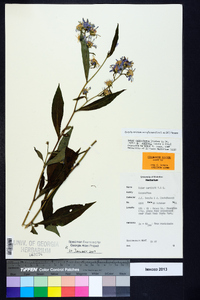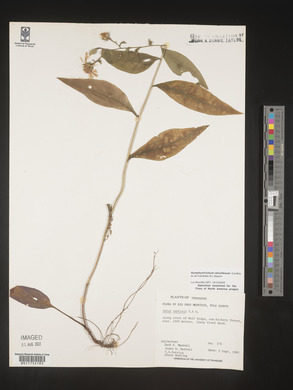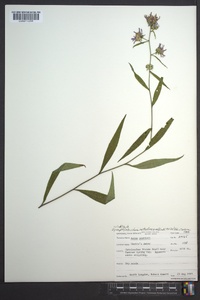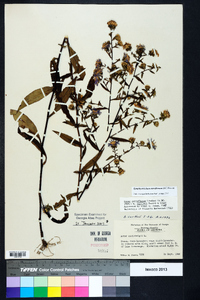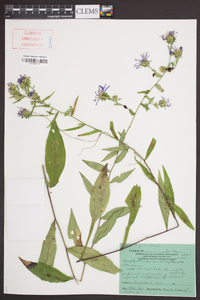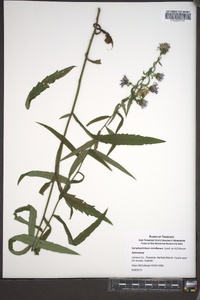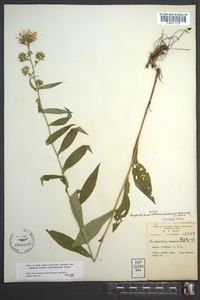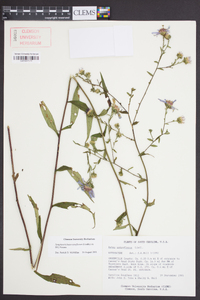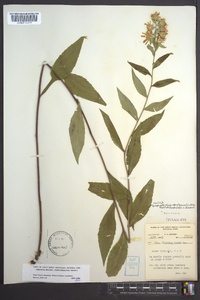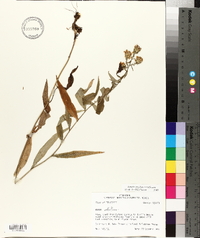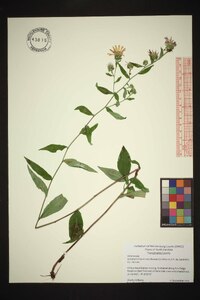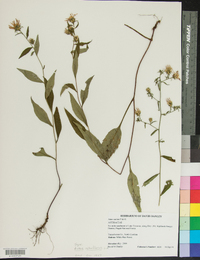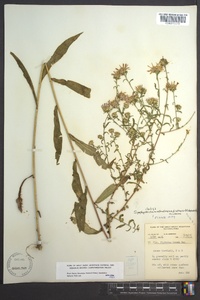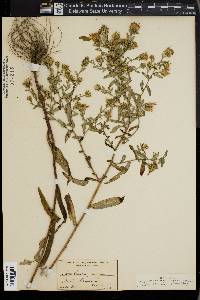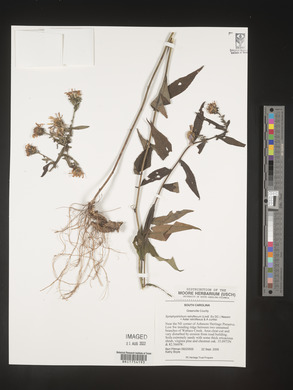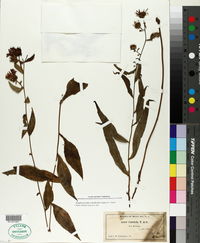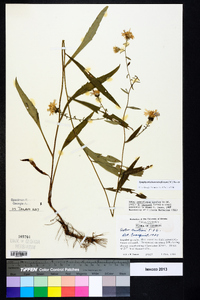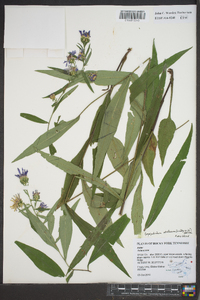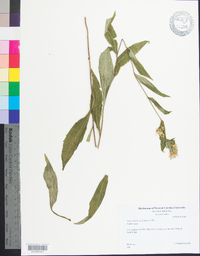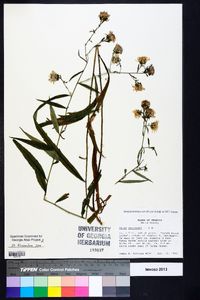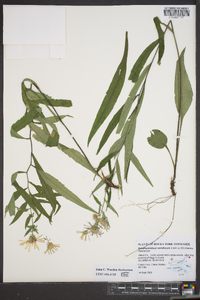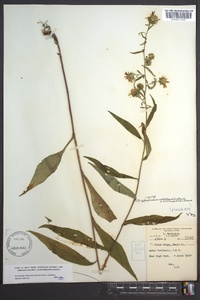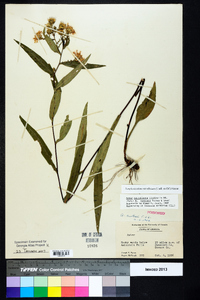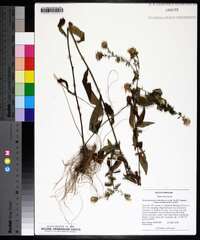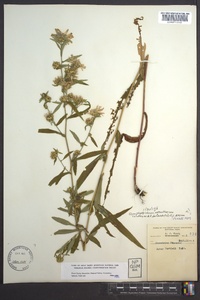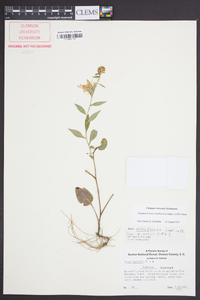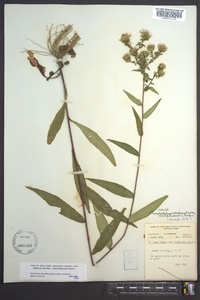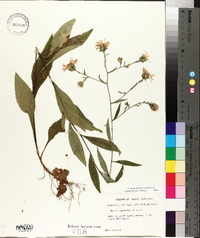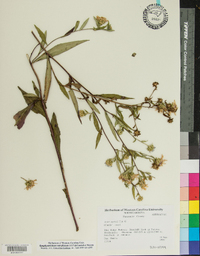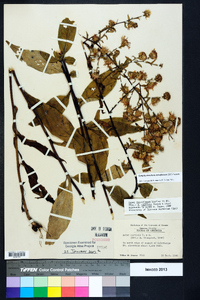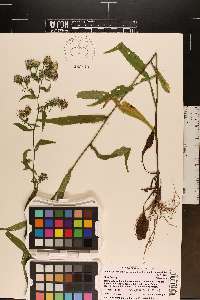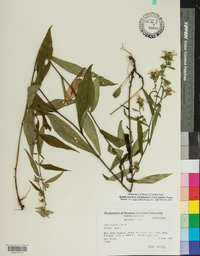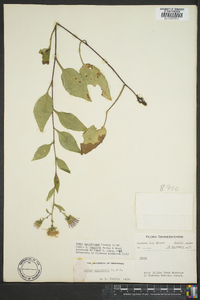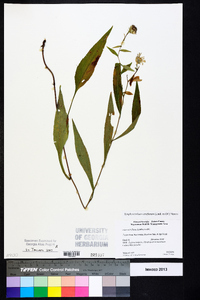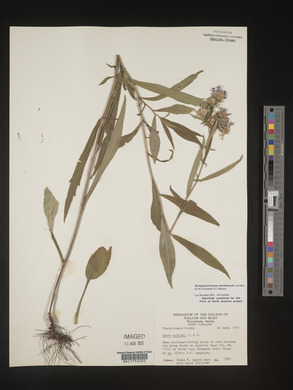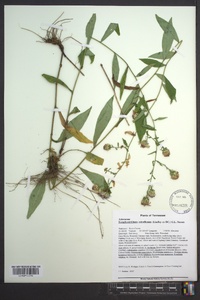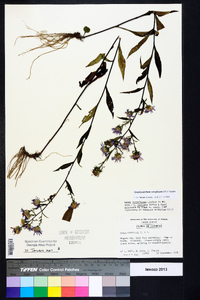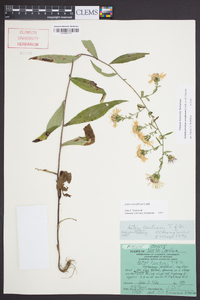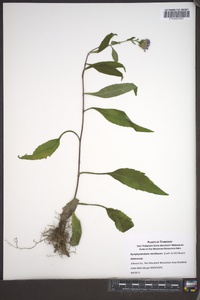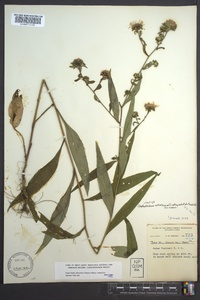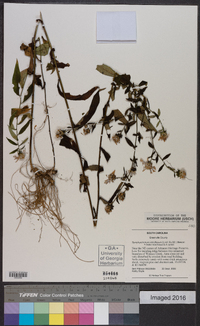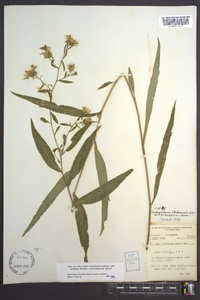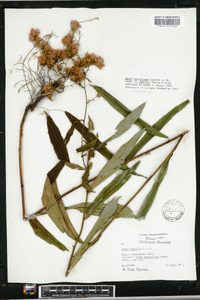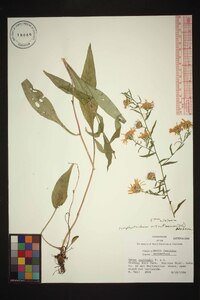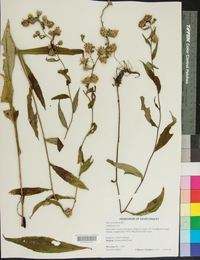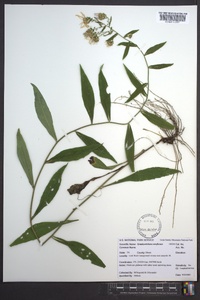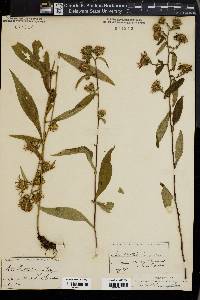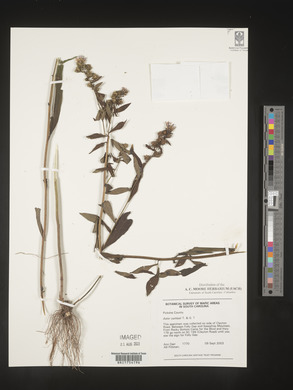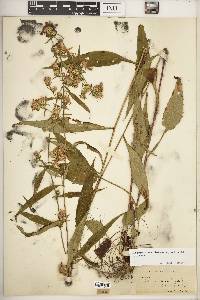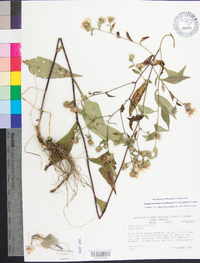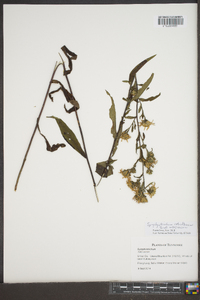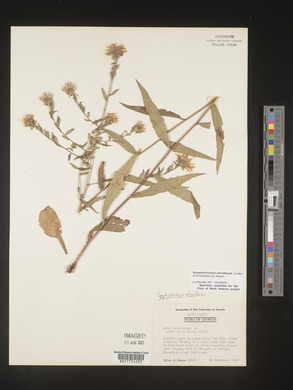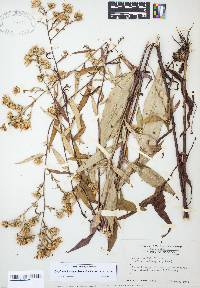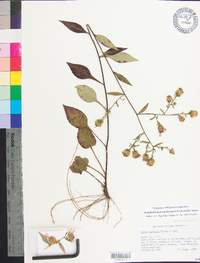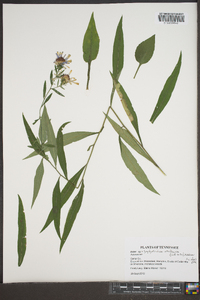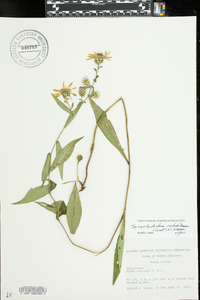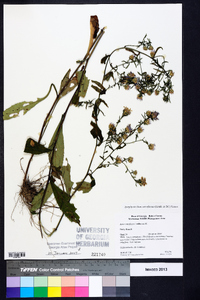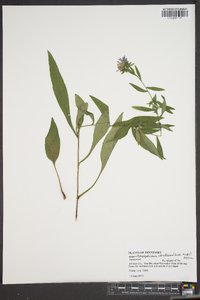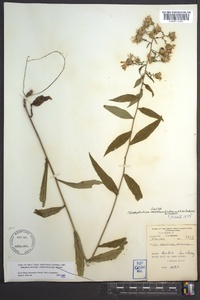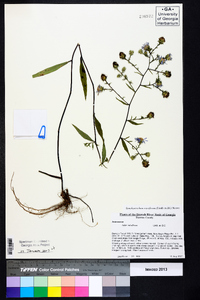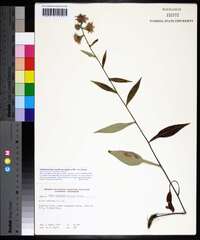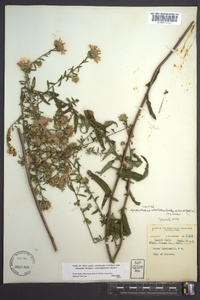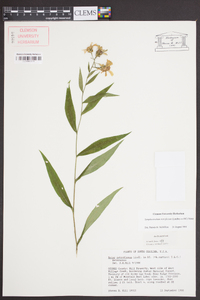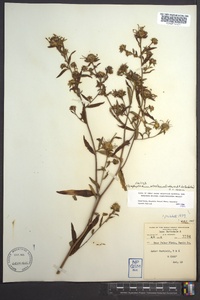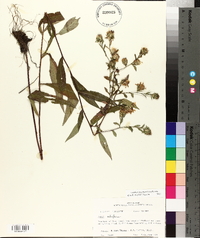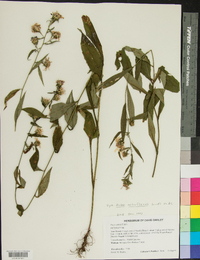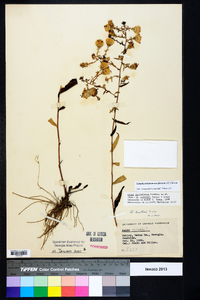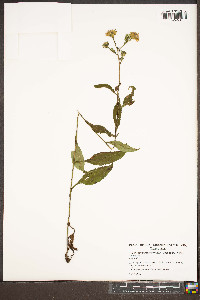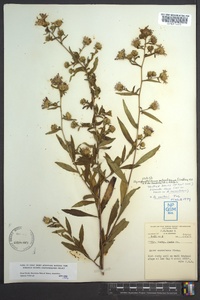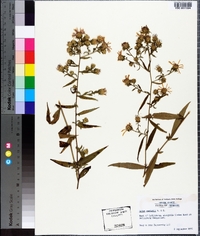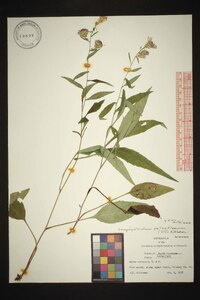
|
|
|
|
Family: Asteraceae
Rigid White-Top American-Aster
|
Perennials, 40-100 cm, usually colonial, sometimes ± cespitose; short-(seldom long-)rhizomatous. Stems 1-2+, erect (straight to slightly flexuous, sometimes robust), glabrous. Leaves thin to firm, margins slightly recurved, scabrous, faces glabrous; basal mostly withering by flowering, petiolate (petioles narrowly winged, sheathing), blades lanceolate-ovate to ovate or spatulate, 25-110 × 10-40 mm, bases usually rounded to attenuate, seldom ± cordate, margins serrulate to shallowly serrate, apices obtuse to acute; proximal cauline often withering by flowering, petiolate (petioles ± widely winged, ± clasping), blades lance-ovate or narrowly ovate, 50-95 × 19-31 mm, bases usually rounded to attenuate, sometimes cuneate, rarely subcordate, margins serrate to serrulate; distal winged-petiolate or subpetiolate or sessile, blades lance-ovate or narrowly ovate to lanceolate or sometimes linear (in arrays), 7-1.5 × 3-31 mm, gradually and strongly reduced distally, bases cuneate, scarcely or not clasping, to slightly rounded and ± clasping, margins serrulate or entire, apices acute to acuminate. Heads in broad (appearing ± corymbiform) or narrow, paniculiform to ± racemiform arrays, branches usually long (to 10 cm), ascending to divaricate. Peduncles (when present) 0.2-1.5 cm, densely pilose or pilosulous, bracts 1-6+, lanceolate to oblong-lanceolate, foliaceous to distally grading into phyllaries. Involucres campanulate, (6-)7-10 mm. Phyllaries in 3-4(-5) series, broadly lanceolate constricted to narrow oblong bases (outer) to oblong-lanceolate or linear-lanceolate (inner), ± unequal, bases indurate 1 / 10 - 1 / 5 (outer) to 4 / 5 + (inner), margins hyaline, narrowly scarious, erose (indurate portion), sparsely ciliolate (foliaceous portion), green zones foliaceous (outer) to distal 1 / 5 - 1 / 4 foliaceous (inner), basally truncate to lanceolate, apices spreading to squarrose, acute to acuminate, mucronulate, abaxial faces glabrous or glabrate, adaxial strigillose (foliaceous portion). Ray florets 13-30; corollas blue to purple, laminae (10-)15-17 × 1.6-3 mm. Disc florets 35-50+; corollas cream to pale yellow becoming pinkish, 5.8-6.8 mm, tubes shorter than funnelform throats, lobes lanceolate, 0.9-1.2 mm, glabrous. Cypselae tan, obovoid to oblanceoloid, compressed, 3-3.9 mm, 4-6-nerved, faces glabrous or sparsely strigillose; pappi< Flowering Aug-Oct. Moist meadows, moist woodlands, dry, open, pine or oak woods, wooded roadsides; 400-1500 m; Ala., Ga., N.C., S.C., Tenn., Va. Symphyotrichum retroflexum is known only from the Appalachian Blue Ridges. It is possible that the species is an allopolyploid derived from members of subsections Cordifolii and Symphyotrichum.
|
This project was made possible in part by the Institute of Museum and Library Services [MG-70-19-0057-19].
Powered by Symbiota

